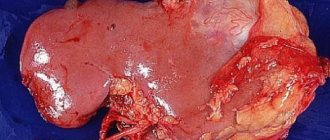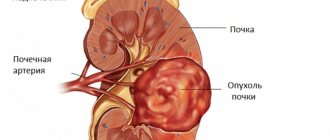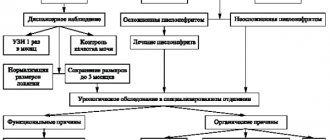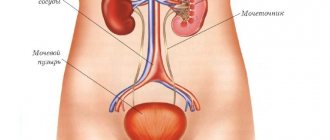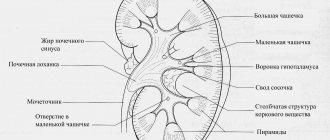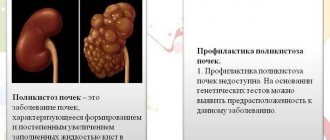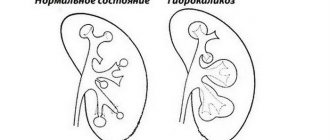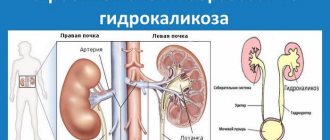The urinary system is extremely important for the functioning of the body. Removing metabolic products with urine relieves a person from the threat of intoxication. The kidneys play the main role in urine formation. This is a paired organ, in the depths of which there are renal pelvises - special cavities that accumulate urine for excretion.
Inflammatory damage to the renal pelvis leads to the fact that they cease to perform their functions, which affects the entire body as a whole. Damage to the renal pelvis is called pyelitis. The development of this disease in children is especially dangerous.
Pyelitis in children: what is it?
The kidneys are a vital organ that takes part in removing excess fluid from the body. The pelvis is an integral part of the organ. It is thanks to them that the amount of liquid that comes out as urine is determined. If kidney function is impaired, almost all organs and systems suffer. Pyelitis is a disease associated with inflammation of the renal pelvis.
Pyelitis is an inflammation of the mucous membrane of the renal pelvis
Pyelitis often occurs in weakened children. The disease may be a consequence of another infectious disease (influenza, acute respiratory infection, cystitis). Pyelitis is very severe in infants. Children behave restlessly and sleep is disturbed. Digestive problems may occur. In the most difficult cases, extensive sepsis can develop, threatening the child’s life.
Girls are more susceptible to the development of pyelitis due to the structural features of the genitourinary system. The urethra in girls is short and wide, so it is easier for pathogenic microbes to move through it into the body.
Classification
Initially, the disease always develops in an acute form with severe symptoms and a significant deterioration in well-being. In the absence of quality treatment, inflammation becomes chronic. In this case, longer therapy is required.
Depending on the location of the inflammatory process, the following are distinguished:
- unilateral pyelitis (right-sided or left-sided);
- bilateral pyelitis.
According to the mechanism of development, the following forms of the disease are distinguished.
- Primary pyelitis. The infection directly affects the renal pelvis.
- Secondary pyelitis. The pelvis is affected against the background of other inflammatory processes in the body.
It often happens that secondary pyelitis develops in a weakened child against the background of a viral disease. Therapy is carried out incorrectly or untimely. A secondary infection occurs. Bacterial pyelitis develops.
Diagnostic procedures
Diagnosis of the disease takes place in several stages. At the first stage, the patient must undergo a biochemical and general blood test to detect an increase in leukocytes in the blood. A general urine test is also given, in which, in the acute form of the disease, protein, leukocytosis and erythrocytosis are detected. If pyelitis is suspected, doctors recommend ultrasound diagnostics of the kidneys. Urography and examination using radionuclides are performed as additional diagnostic procedures.
Causes of the pathological process
The rapid proliferation of pathogenic microflora entering the kidneys is the main cause of pyelitis. The paths of movement of viruses and bacteria can be different. During infectious diseases, the blood carries harmful microorganisms from inflamed areas. Also, viruses and bacteria can enter the kidneys from the anus or through the genitals.
In children, E. coli is most often the causative agent of the disease. Less commonly - staphylococci, streptococci, viruses. In some cases, a mixed form of the disease may occur.
Pyelitis can develop against the background of other infectious diseases
Children with insufficient immunity are more susceptible to the development of pyelitis. These are children who have survived other infectious diseases. Premature babies, as well as children who are poorly nourished and spend little time outdoors, are at risk. The anatomical features of the structure of the urinary system can contribute to the development of the disease.
In girls, pyelitis often develops due to failure to comply with basic hygiene rules. Pathogenic microflora reaches the kidneys from the genital tract.
A friend of mine's daughter was diagnosed with pyelitis a few days after returning from the camp. No one monitored the girl’s hygiene in the children’s institution. The situation was further aggravated by reduced immunity due to a cold.
Video: Doctor Komarovsky about washing girls
Hypothermia is another common cause of pyelitis in children. Babies should always be dressed appropriately for the weather. Children should not be allowed to sit on cold ground or concrete.
Why does the disease occur?
Pyelonephritis in infants develops in several ways. Often the infection enters the tissue of a healthy kidney through hematogenous, lymphogenous or urogenic routes.
In girls, this pathology is registered 5 times higher than in boys. The development of the disease in a newborn occurs against the background of:
- Long-term ongoing infectious process. These include sore throat, pneumonia, purulent omphalitis. The listed pathologies are accompanied by the persistence of pathogenic flora in the body, and there is a high risk of spread through the blood.
- Dysbacteriosis and intestinal infection.
- Violations of the child’s personal hygiene rules (improper care of the baby’s external genitalia).
- The presence of congenital kidney pathologies, reflux in the ureter area.
- Lack of vitamin D, prematurity, muscle wasting.
In an infant, these diseases become a risk factor for the spread of infection through various routes into healthy kidney tissue.
The development of the inflammatory process occurs quickly, which is accompanied by pronounced changes in the condition of children.
The causes of pyelonephritis among 1-year-old children are the spread of streptococci, staphylococci, and E. coli in the kidneys.
The penetration of microbes is facilitated by decreased immunity. Therefore, parents carefully monitor the child and provide the necessary nutrition.
It is important to feed newborns with breast milk; it contains necessary substances, including immunoglobulins. With natural feeding, the child’s body develops protection against infections.
Symptoms
There are no signs that could characterize pyelitis specifically. Therefore, many parents are in no hurry to seek medical help and prefer to carry out therapy at home. As a result, the pathological process becomes chronic. The child requires longer and more expensive therapy.
Acute pyelitis may begin with fever. The body temperature of a small patient often rises to 39–40 degrees Celsius. There are symptoms of general intoxication, such as:
- nausea;
- headache;
- aching joints;
- decreased appetite.
Infants become lethargic, restless, and sleep poorly. The baby may refuse to eat. Frequent regurgitation may occur. Such symptoms can be present in many diseases. A doctor can make an accurate diagnosis. Therefore, you cannot hesitate to seek qualified help.
High body temperature will indicate the development of inflammation
Older children may complain of the following signs of illness:
- pain in the lower back, at the location of the inflammatory process (right, left or both sides);
- frequent urination;
- burning when urinating.
In some children, pyelitis may occur with mild symptoms. There is an increase in body temperature to 37.5 degrees Celsius, kidney function is not impaired. In this case, the child may be lethargic. Nocturnal enuresis (urinary incontinence) may be a cause of concern. Any unpleasant symptoms are a reason to consult a pediatrician.
A friend of mine's child was diagnosed with pyelitis due to mild malaise and a slightly elevated temperature. The pediatrician suspected inflammation of the renal pelvis only because the little patient had recently experienced cystitis. An accurate diagnosis was made after a thorough examination.
Diagnosis of pyelitis in children
Only through a comprehensive examination of a small patient can an accurate diagnosis be made. In their work, specialists use the following methods:
- Questioning the patient (or his parents). The specialist finds out when the first complaints appeared and what preceded them.
- Examination of the patient. The doctor may feel a lump in the area of the inflamed kidney. In addition, when palpating the affected area, the patient will feel pain.
- Blood chemistry. The development of the disease will be indicated by an increased ESR (erythrocyte sedimentation rate) and a large number of leukocytes.
- General urine analysis. The development of kidney inflammation will be indicated by an increased level of leukocytes.
- Bacteriological culture of urine. The study allows us to identify which pathogen causes the disease.
- X-ray of the kidneys. The study allows you to determine the localization of the inflammatory process.
- Ultrasound of the kidneys. The technique allows you to visualize pathological changes in the kidney.
It is important to differentiate pyelitis in children with cystitis, typhoid fever, adnexitis, cholecystitis, etc. Therefore, additional patients can be referred for examination to a gynecologist, surgeon, oncologist, or proctologist.
Ultrasound allows you to identify the localization of the inflammatory process
Collecting urine for analysis from a child under one year old is a big problem. I was convinced of this from personal experience. For a long time I tried to “catch” the material using a special container. I didn’t know then that pharmacies have long had urinals for this purpose. It is important to buy a device that is suitable for boys or girls. The fastening system is different. The urine bag is reasonably priced and can be purchased at any pharmacy.
Diagnostic methods
To identify pyelonephritis in infants and differentiate it from glomerulonephritis, the following examination methods are necessary:
- Collection of complaints from the mother.
- Ultrasound examination (ultrasound) of the kidneys and bladder.
- Blood pressure measurement.
IMPORTANT! Cystourethrography is prescribed only for repeated exacerbations of pyelonephritis and when hydronephrosis, sclerosis and obstruction of renal vessels are detected.
Laboratory research:
- Blood tests: general, biochemical. Inflammation is characterized by: leukocytosis, increased ESR, neutrophilia, decreased hemoglobin and red blood cells, the appearance of C-reactive protein, creatinine and urea.
- General urine analysis. With pyelonephritis, the appearance of bacteria, protein and red blood cells is noted.
- Zimnitsky's test, Nechiporenko.
- Culture of urine for pathogenic microflora with identification of the pathogen.
- Determination of bacterial sensitivity to antibiotics.
Sources used:
- https://www.ayzdorov.ru/lechenie_pielonefrit_grydnichek.php
- https://urohelp.guru/pochki/pielonefrit/u-grudnichka.html
- https://1opochkah.ru/deti/pielonefrit-u-grudnichka.html
- https://creacon.ru/bolezni-pochek/pielonefrit-u-grudnichka-simptomyi.html
- https://grudnichky.ru/zdorove/pielonefrit-u-grudnichka.html
- https://tvoyapochka.ru/bolezni/pielonefrit-u-grudnichka
Treatment of the disease
The acute form of pyelitis in children is a reason for hospitalization. Comprehensive treatment based on the use of medications and physiotherapy will allow you to achieve a good therapeutic effect. The patient will have to remain in bed for some time. Proper nutrition is of great importance. In the most difficult cases, surgical intervention is indicated.
Drug therapy
After an accurate diagnosis has been made, the child may be prescribed drugs from the following groups.
- Antibiotics. Most often, broad-spectrum medications are prescribed. Children from the first days of life can be prescribed drugs such as Sumamed, Cefotaxime, Flemoxin Solutab. Medicines are prescribed in the form of suspensions or solutions for injection. The dosage is selected according to the patient's body weight.
- Antimicrobial drugs. Medicines from this category are capable of suppressing the vital activity of not only pathogenic bacteria, but also pathogenic viruses and fungi. Children over 3 months old can be prescribed Biseptol suspension. Children over 5 years of age are often prescribed the drug Monural. The drug Streptocide shows good results. It is prescribed for patients over 3 years of age.
- Antispasmodic drugs. Medicines in this category help cope with pain. Children over 6 years of age may be prescribed Spazmalgon. Babies older than 6 months can be prescribed the drug Papaverine.
- Non-steroidal anti-inflammatory drugs. Such medications help lower body temperature, relieve symptoms of intoxication in the body, and relieve pain. From the first days of life, products such as Panadol and Nurofen are allowed for use.
The dosage regimen depends on the form of the disease and the severity of symptoms. In most cases, drug therapy is carried out for 10–14 days.
My son never had any problems taking antibiotics. It’s good that modern suspensions are produced with flavorings. The child takes this medicine with pleasure. I remember with horror the treatment with medications in my childhood. The bitter taste of solutions and tablets is difficult to forget.
Medicines for pyelitis in children - gallery
Panadol relieves pain and normalizes body temperature
Sumamed is a popular broad-spectrum antibiotic
Monural is an effective antimicrobial agent
Spasmalgon helps relieve pain
Nutritional Features
In the acute period of the disease, the child is advised to drink plenty of fluids. The amount of clean water you drink per day is calculated based on your weight (50 ml per 1 kg). In addition to clean water, you can offer your child dried fruit compote, weak tea, and fresh juices. You should definitely include fresh fruits and vegetables in your diet.
Preference should be given to seasonal products. Strawberries bought in a supermarket in winter will not do any good.
After feeling better, the child is prescribed diet No. 7. The daily diet may consist of the following products and dishes:
- porridge;
- vegetable soups;
- dairy products;
- yeast bread;
- lean meats and poultry;
- salads of fresh vegetables and fruits, seasoned with kefir or vegetable oil;
- dried fruits;
- honey (provided there are no allergies).
A child’s diet must include fermented milk products
You will have to pay attention to the method of preparing dishes. Fried and smoked foods are not allowed. It is recommended to boil or steam food.
Until complete recovery you will have to exclude the following foods:
- chocolate;
- fatty meats and fish;
- seasonings and spices;
- too spicy and salty dishes (such products should not be present in the diet of a completely healthy child);
- canned food
If a sick child is breastfed, the mother must follow the diet.
My teenage niece, who suffered from pyelonephritis, had to go on diet No. 7. She liked this food option. It was possible not only to normalize the kidneys, but also to improve the condition of the skin and remove several extra pounds.
Physiotherapy
After the acute inflammation has subsided, the child may be prescribed physiotherapeutic procedures. With their help, the body will recover faster. The following methods show good results.
- UHF. The child’s body is exposed to a high-frequency electromagnetic field. The procedure improves blood supply to the affected tissues. As a result, pain is reduced and swelling is reduced.
- Electrophoresis. Medicines are administered through the skin using current. In this way, drugs are delivered to the affected areas faster.
For children who have survived acute pyelitis, sanatorium-resort treatment is indicated. Therapeutic baths (coniferous, oxygen) and mud therapy will be beneficial. Applications with ozokerite show good results. The thermal procedure has an anti-inflammatory effect and strengthens local immunity.
Physiotherapy procedures are contraindicated if the child has elevated body temperature or feels unwell.
Surgical intervention
The need for surgical intervention may arise in cases of complex pyelitis, when adequate conservative treatment does not produce results and a kidney abscess develops. The doctor removes the affected tissue and cleanses the kidney of pus. In the most advanced cases, when the risk to the child’s life increases, the organ can be removed.
Operations are performed for developmental anomalies of the urinary system
If the affected area is small, laparoscopic operations can be performed with minimal risk of injury. The intervention is performed without large incisions. The doctor makes only a few punctures for working instruments and a camera. The working surface is displayed on the monitor screen. After such interventions, children recover quickly.
My child had to undergo a similar operation. The very next day we were discharged home. A week later they came back to the hospital to have the stitches removed.
ethnoscience
Many traditional medicine recipes show high effectiveness in the treatment of kidney diseases. However, self-medication is strictly forbidden. Any chosen prescription must be discussed with your doctor.
Infusion from the fruits of the juniper tree
To prepare the medicine, take a tablespoon of fruit and pour 250 ml of boiling water. After cooling, the product is filtered. Children are recommended to take a teaspoon of this remedy 4 times a day. The infusion will strengthen local immunity and relieve inflammation.
Medicinal collection
To prepare the product you will need the following components:
- lingonberry leaf;
- St. John's wort herb;
- black elderberry flowers;
- chamomile flowers.
Preparation:
- All components are crushed and combined in equal proportions.
- Pour a tablespoon of the mixture into 500 ml of boiling water and cook over low heat for 15 minutes.
- The finished product is cooled and filtered.
Children are recommended to take a tablespoon of this decoction up to 4 times a day. The medicine helps normalize kidney function and relieves swelling.
Bearberry
Pour a tablespoon of bearberry leaves into a glass of boiling water and cook over low heat for 5 minutes. Then the product should stand for another 2 hours with the lid closed. The broth should be strained and drunk in small sips throughout the day. Bearberry helps restore immunity after illness and accelerates the regeneration of damaged tissues.
Honey
The product helps normalize kidney function and strengthens the body's defenses. It can be consumed in its pure form provided there is no allergy. The daily intake is calculated based on the child’s body weight (1 g of product per 1 kg of weight).
Honey water will be useful for pyelitis. Dissolve a teaspoon of honey in a glass of warm water (not hot!). This drink cleanses the renal pelvis well and normalizes urine production.
A mother can take the remedies described above if her sick baby is breastfed. In this case, the woman must also consult a doctor.
Grandmother and grandfather kept bees. They treated almost all diseases with honey. When my mother was diagnosed with kidney inflammation, honey water came to the rescue.
Traditional medicine recipes - gallery
Lingonberry leaves are part of the medicinal collection
The fruits of the juniper tree are used to prepare a medicinal decoction.
Honey strengthens the immune system and normalizes kidney function
Chamomile is used in many traditional medicine recipes.
Treatment prognosis
If you seek help in a timely manner, the prognosis is favorable. Full recovery occurs in 10–14 days. A significant improvement in the child’s well-being is observed within 3–4 days after the start of therapy. However, you cannot stop taking prescribed medications.
If you refuse to seek qualified help, serious complications can develop. Often the disease becomes chronic. It is no longer possible to cure it completely. Only stable remission can be achieved. The child is being registered with a nephrologist.
A child with chronic pyelitis will be registered with a nephrologist
Improper treatment of chronic pyelitis leads to a gradual decrease in organ function. Kidney failure develops, which can threaten the patient's life.
Failure to treat the disease in a timely manner can also lead to the spread of infection throughout the body. There is a risk of developing complications such as:
- pyelonephritis;
- meningitis;
- kidney abscess;
- sepsis.
Such diseases often end in death.
Preventive measures
Pyelitis is an unpleasant disease, and if the first signs are detected, you should consult a nephrologist as early as possible and begin to follow his recommendations. Prevention of pyelitis includes careful adherence to the rules of personal hygiene, adhering to the principles of a healthy lifestyle, including proper nutrition in combination with feasible physical activity. Try to avoid hypothermia, and in the fall and spring it is advisable to maintain your immunity level by taking multivitamins.

